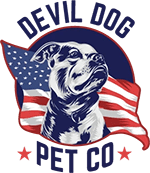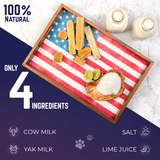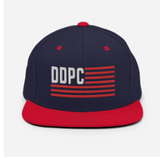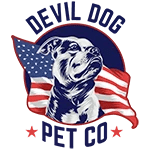Key Takeaways
- Bison dog food uses bison as the primary protein, offering a leaner and nutrient-dense alternative ideal for dogs with common protein sensitivities.
- Bison provides higher protein, iron, and B12 levels with significantly less fat compared to beef and chicken, supporting muscle maintenance and overall health.
- Dogs switching to bison often experience reduced itching, firmer stools, and improved coat condition within weeks due to its hypoallergenic properties.
- Multiple bison dog food forms are available, including raw, freeze-dried, kibble, and treats, catering to different feeding preferences and dietary needs.
- Bison sourced from free-range herds offers an ethically responsible and sustainable protein option for conscientious dog owners.
Table of Contents
- What Is Bison Dog Food? (Quick Facts for Responsible Owners)
- Why Choose Bison Protein for Your Dog? (Standards That Go Beyond the Bag)
- Forms & Types – Exploring Bison Dog Food Options
- Health Benefits of Bison Dog Food (What the Science Shows)
- Forms & Types – Exploring Bison Dog Food Options (For Every Lifestyle & Need)
- Health Benefits of Bison Dog Food (What the Science, and Our Dogs, Show)
- Bison vs. Other Dog Food Proteins: Head-to-Head Comparison (Decision Guide for Owners Who Lead)
- Bison vs. Other Dog Food Proteins: Head-to-Head Comparison
- How to Transition Your Dog to Bison-Based Diets Without GI Drama
- What to Look for in High-Quality Bison Dog Food
What Is Bison Dog Food? (Quick Facts for Responsible Owners)
Bison dog food delivers lean, nutrient-dense protein from North American bison (buffalo). Unlike conventional beef or chicken formulas, bison provides 18-22g protein per 100g with significantly less saturated fat and higher concentrations of iron, zinc, and B-vitamins.
This isn't just ingredient swapping, it's strategic nutrition for dogs needing alternatives. Bison works particularly well for pups with food allergies, weight management needs, or owners seeking ethically sourced, sustainable protein sources. For dogs that also enjoy chewing, antler dog chews can be a great addition to their routine, offering both enrichment and dental benefits.
Dogs with protein sensitivities see the biggest wins. If your dog struggles with chicken-induced itching or beef-related digestive upset, bison's novel protein profile often eliminates these reactions within 2-3 weeks of consistent feeding. For a long-lasting treat option that supports dental health, consider yak chews as a complementary chew for sensitive dogs.
Download the FREE 10-Step Dog Prep Guide
Why Choose Bison Protein for Your Dog? (Standards That Go Beyond the Bag)

Bison outperforms conventional proteins in three critical areas: nutritional density, hypoallergenic potential, and ethical sourcing. While beef averages 250 calories per 100g, bison delivers equivalent protein at just 190-210 calories, ideal for maintaining lean muscle without excess fat.
| Nutrient (per 100g) | Bison | Beef | Chicken |
|---|---|---|---|
| Protein | 28g | 26g | 23g |
| Fat | 2.4g | 15g | 14g |
| Iron | 3.4mg | 2.6mg | 0.9mg |
| B12 | 2.9mcg | 2.6mcg | 0.3mcg |
Hypoallergenic Edge: Because most dogs haven't been exposed to bison, their immune systems don't recognize it as a trigger. Customer reports consistently show reduced scratching, firmer stools, and improved coat shine within 14 days of switching.
Ethical Sourcing: Quality bison comes from free-range herds managed sustainably across American plains, not factory farms. This matters for owners who demand transparency and environmental responsibility in their dog's bowl. For more on the nutritional benefits of bison, see this USDA resource on bison meat as a nutritious choice.
Forms & Types – Exploring Bison Dog Food Options
Raw & Freeze-Dried Bison Diets
Raw bison diets appeal to owners seeking ancestral nutrition without processing. Serve 4 oz per 25 lbs of body weight, split into two meals. Always wash hands after handling and use thawed portions within 3 days.
Freeze-dried options offer raw nutrition with shelf stability. Rehydrate with warm water or serve as high-value training treats, one cube contains concentrated protein equivalent to several ounces of fresh meat.
Kibble & Dry Bison Formulas
Look for "bison" as the first ingredient, not "bison meal" buried fourth or fifth. Quality formulas contain 26-32% protein with named fat sources like "bison fat" or "sunflower oil."
Grain-free versions suit dogs with wheat sensitivities, while grain-inclusive recipes provide fiber and sustained energy for active dogs. Always check the guaranteed analysis, not just marketing claims. If you want to explore other protein options, you might find this beef dog food guide helpful for comparison.
Bison Treats, Chews, and Supplements
Bison jerky strips work perfectly for training, high value without the mess of fresh meat. Bison trachea chews provide dental benefits but supervise closely due to their firm texture.
For enrichment rotation, pair bison treats with elk antlers for extended gnawing sessions and split antlers for mineral content, creating a complete spectrum of textures and nutrients.
Health Benefits of Bison Dog Food (What the Science Shows)
Lean Muscle Development: Bison's complete amino acid profile supports muscle maintenance without excess calories. Dogs transitioning from higher-fat proteins often show improved body condition within 6-8 weeks.
Nutrient Density: The iron content (3.4mg per 100g) supports healthy red blood cell production, while elevated B12 levels boost energy metabolism. Zinc contributes to coat health and immune function.
Digestive Health: Lower fat content (2.4g vs. beef's 15g) reduces digestive stress. Dogs prone to pancreatitis or sensitive stomachs often tolerate bison better than conventional proteins.
Weight Management: Bison's high protein-to-calorie ratio helps maintain satiety while supporting healthy weight loss. A 50-lb dog needs roughly 20% fewer calories with bison. For senior dogs, you may want to read this senior dog food guide to ensure optimal nutrition as your dog ages.
Forms & Types – Exploring Bison Dog Food Options (For Every Lifestyle & Need)

Bison dog food comes in multiple formats, each serving different feeding philosophies and practical needs. Understanding these options helps you match your dog's requirements with the right delivery method.
Raw & Freeze-Dried Bison Diets
Raw bison appeals to owners seeking ancestral nutrition with minimal processing. Fresh raw requires careful handling, wash hands after every serving, use thawed portions within 3 days, and serve 4 oz per 25 lbs of body weight split into two meals. Freeze-dried bison retains raw nutrition while eliminating pathogen risks, making it ideal for travel or owners uncomfortable with fresh raw handling.
Both formats deliver maximum protein bioavailability but demand higher investment and storage planning. Always transition gradually and consult your veterinarian before switching to raw feeding protocols.
Kibble & Dry Bison Formulas
Dry bison dog food offers convenience without sacrificing nutrition when you choose meat-first formulas. Look for "bison" as the first ingredient, not "bison meal" buried in the middle. Quality kibble includes whole food sources like sweet potatoes and peas rather than generic "grain fractions."
Grain-free and grain-inclusive options both work, focus on ingredient quality over marketing trends. Puppy formulas require 22-24% protein minimum; adult maintenance needs 18-20%; senior dogs often benefit from 20-22% for muscle preservation.
Bison Treats, Chews, and Supplements
Bison jerky strips, training bites, and freeze-dried toppers add variety to your rotation alongside extra large Himalayan dog chews and extra thick bully sticks. Single-ingredient bison treats work perfectly for dogs with multiple protein sensitivities. Bison bones and trachea provide dental benefits but require supervision due to their hardness, similar precautions as antler chews.
Rotate bison treats with other natural chews weekly to prevent dietary monotony and provide varied enrichment experiences.
Health Benefits of Bison Dog Food (What the Science, and Our Dogs, Show)
Bison's nutritional profile delivers measurable health improvements for dogs with specific needs. Clinical observations and customer reports consistently show positive changes within 2-4 weeks of transitioning.
Lean Muscle Development: Bison provides 22-24g protein per 100g with complete amino acid profiles supporting muscle maintenance and growth. The high biological value means your dog's body utilizes more of the consumed protein compared to plant-based alternatives.
Nutrient Density: Bison contains 2.5x more iron than chicken and 40% more B12 than beef, supporting energy production and immune function. Zinc levels promote healthy coat shine and wound healing, visible improvements owners notice within the first month.
Hypoallergenic Edge: Dogs with beef or chicken sensitivities often thrive on bison. One customer reported their dog's chronic itching disappeared within 3 weeks of switching to bison dog food, with firmer stools and increased energy following shortly after.
Weight Management Support: At 2-3g less fat per 100g than beef, bison helps overweight dogs maintain satiety while reducing calories. The high protein-to-fat ratio supports healthy weight loss when portioned correctly.
Track energy levels, stool quality, and coat condition for 14 days after transitioning to measure your dog's individual response. Consult your veterinarian before major dietary changes, especially for puppies, seniors, or dogs with existing health conditions. For more canine nutrition tips and health topics, browse the devil dog blog.
Bison vs. Other Dog Food Proteins: Head-to-Head Comparison (Decision Guide for Owners Who Lead)
Understanding how bison stacks against common proteins helps you make informed feeding decisions based on your dog's specific needs and sensitivities.
| Protein Source | Protein % | Fat % | Calories/100g | Allergy Risk | Sustainability |
|---|---|---|---|---|---|
| Bison | 22-24% | 2-4% | 146 | Very Low | Excellent |
| Beef | 20-22% | 5-7% | 165 | High | Poor |
| Chicken | 18-20% | 4-6% | 158 | Very High | Poor |
| Salmon | 19-21% | 8-10% | 178 | Low | Variable |
Digestibility: Bison's lean profile and novel protein status make it easier to digest for sensitive dogs. Wild-sourced bison avoids the antibiotics and hormones common in factory-farmed beef and chicken, supporting cleaner nutrition for your dog.
Bison vs. Other Dog Food Proteins: Head-to-Head Comparison

Choosing the right protein for your dog means understanding how bison dog food stacks up against conventional options. Here's the unfiltered breakdown every responsible owner needs.
| Protein Source | Protein Content | Fat Content | Allergy Risk | Digestibility | Sustainability |
|---|---|---|---|---|---|
| Bison | 22-24g per 100g | 1.8-2.4g per 100g | Very Low | Excellent | High (Wild/Free-Range) |
| Beef | 20-22g per 100g | 4.2-6.8g per 100g | Moderate-High | Good | Low (Factory Farming) |
| Chicken | 18-20g per 100g | 3.6-9.3g per 100g | High | Good | Low |
| Fish (Salmon) | 19-22g per 100g | 6.3-12g per 100g | Low-Moderate | Excellent | Variable |
Palatability Factor: Most dogs show immediate interest in bison's rich, gamey flavor. Unlike chicken or beef, which can trigger food boredom, bison maintains appeal over extended feeding periods. For dogs who love to chew, the Beast Himalayan Dog Chew is a flavorful, long-lasting option that complements a bison-based diet.
Bioavailability Edge: Wild bison contains higher concentrations of iron, B12, and zinc compared to grain-fed beef, nutrients your dog's system can actually absorb and use for muscle development and immune function. For a scientific perspective on bison nutrition, see this peer-reviewed study on bison meat.
How to Transition Your Dog to Bison-Based Diets Without GI Drama
Switching proteins requires tactical precision. Rush the process, and you'll deal with loose stools and a stressed dog. Follow this proven protocol instead.
7-Day Transition Schedule:
- Days 1-2: 75% current food + 25% bison formula
- Days 3-4: 50% current food + 50% bison formula
- Days 5-6: 25% current food + 75% bison formula
- Day 7+: 100% bison formula
Critical Monitoring Points: Track stool consistency, energy levels, and appetite daily. Normal adjustment includes slightly softer stools for 2-3 days. Red flags: vomiting, diarrhea lasting over 24 hours, or complete appetite loss.
Pro Tip: Introduce bison treats before switching kibble. Offer pea-sized pieces during training sessions to gauge your dog's tolerance and interest level. If you need a high-value training reward, try these 12" braided bully sticks for a satisfying chew experience.
Portion Guidelines by Weight:
- 10-25 lbs: Start with 1/4 cup bison formula
- 26-50 lbs: Start with 1/2 cup bison formula
- 51-75 lbs: Start with 3/4 cup bison formula
- 76+ lbs: Start with 1 cup bison formula
Keep a written log for 14 days post-transition. Note food intake, water consumption, elimination schedule, and energy patterns. This data proves invaluable if adjustments are needed. For more feeding tips and safety information, check out which human foods are toxic to dogs before introducing new treats or chews.
What to Look for in High-Quality Bison Dog Food
Not all bison dog food delivers on its promises. Use this veteran-level inspection checklist to separate premium from pretenders.
Ingredient Deck Analysis:
- First ingredient: "Bison" or "Deboned Bison", never "bison meal" as the primary protein
- Protein sources: Single-protein formulas reduce allergy risk; avoid "chicken fat" or "beef meal" if seeking true novel protein benefits
- Filler identification: Corn, wheat, and soy should appear late in the list or not at all
Source Transparency Markers:
- Specific geographic sourcing: "Rocky Mountain bison" beats generic "North American bison"
- Wild or free-range certification from recognized bodies
- Lot number tracking and third-party testing documentation
Regulatory Compliance: AAFCO "Complete and Balanced" statement for your dog's life stage. Feeding trial data trumps nutrient profile calculations when available.
For dogs who need extra chewing satisfaction, long lasting dog chews can help reduce boredom and support dental health as part of a holistic diet plan.
Download the FREE 10-Step Dog Prep Guide
Frequently Asked Questions
What are the main nutritional benefits of feeding my dog bison protein compared to beef or chicken?
Bison protein offers higher levels of protein, iron, and vitamin B12 while containing significantly less saturated fat than beef or chicken. This lean, nutrient-dense profile supports muscle maintenance, energy, and overall health without excess calories or fat.
How does bison dog food help dogs with common protein sensitivities or allergies?
Bison is a novel protein that’s less likely to trigger allergic reactions common with beef or chicken. Dogs switching to bison often experience reduced itching, firmer stools, and improved coat condition within weeks due to its hypoallergenic nature.
What forms of bison dog food are available, and how do I choose the best option for my dog's dietary needs?
Bison dog food comes in raw, freeze-dried, kibble, and treat forms. Choose based on your dog’s preferences, lifestyle, and digestive tolerance, raw or freeze-dried for nutrient retention, kibble for convenience, and treats for training or enrichment.
How can I safely transition my dog to a bison-based diet without causing digestive issues?
Switch gradually over 7–10 days by mixing increasing amounts of bison food with the current diet. Monitor your dog’s stool and energy, adjusting the pace if needed to avoid gastrointestinal upset and ensure a smooth transition.






